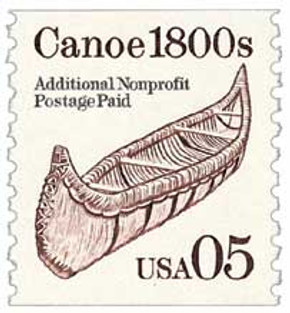U.S. #2452
5¢ Circus Wagon
Transportation Series
Issue Date: August 31, 1990
City: Syracuse, NY
Quantity: 38,255,000
Printed By: Bureau of Engraving and Printing
Printing Method: Engraved
Perforations: 9.8
Color: Carmine
In 1793, America's first permanent circuses opened in Philadelphia and New York City. Travel... more
U.S. #2452
5¢ Circus Wagon
Transportation Series
Issue Date: August 31, 1990
City: Syracuse, NY
Quantity: 38,255,000
Printed By: Bureau of Engraving and Printing
Printing Method: Engraved
Perforations: 9.8
Color: Carmine
In 1793, America's first permanent circuses opened in Philadelphia and New York City. Traveling circuses were later organized, and the need for "big tops" and circus wagons arose. As circus owners began to advertise the arrival of their shows with grand street parades, the wagon became more ornate. Gilded lettering, elaborate paintings, and decorative woodwork were gradually added - contributing to the spectacle which enticed patrons to the circus grounds.
U.S. #2452 is part of the popular Transportation Series. The Transportation Series contains 59 stamps with engraved designs featuring modes of transportation from the baby buggy to the racecar.
About the Transportation Series
A ground-breaking stamp was quietly issued on May 18, 1981. For the first time in U.S. history, a coil stamp featured its own unique design rather than simply copying that of the current definitive stamp. Fifty more coil stamps would be issued over the course of the next 15 years, each picturing a different mode of transportation.
The various denominations provided face values to exactly match the rates for several categories of Third Class mail (bulk rate and quantity-discounted mail). As the rates changed, new stamps with new values were added. Never before had a stamp series included so many fractional cent values.
Most of the stamps in the Transportation Series were printed by the Bureau of Engraving and Printing, although a few were printed by private contractors. All but a few of the later stamps were produced by engraved intaglio. Differences in precancels, tagging, paper and gum provide a large number of varieties.
By the time the last stamp was issued in 1995, the Transportation Series had become the largest US coil stamp series in history.
Less 















